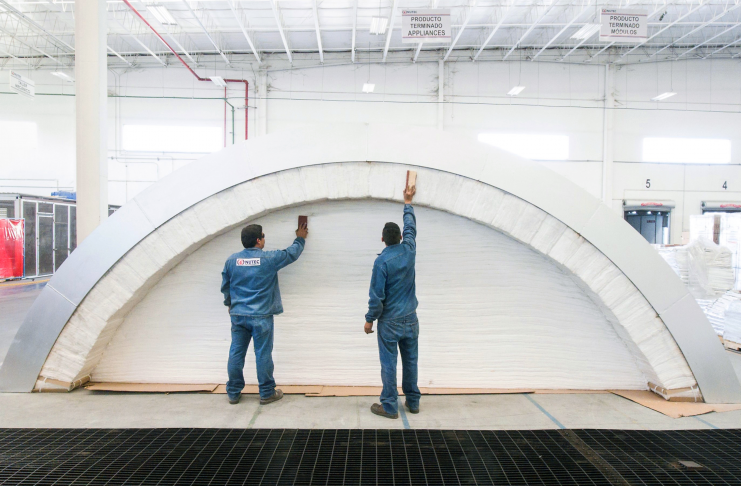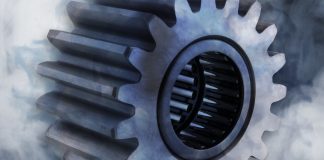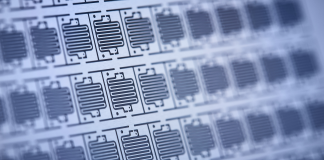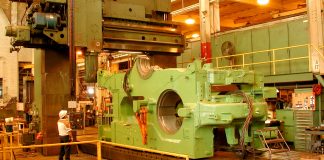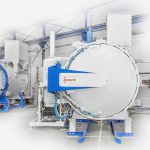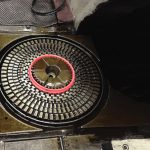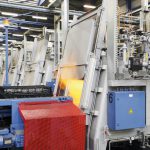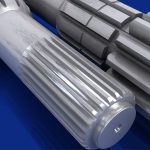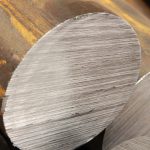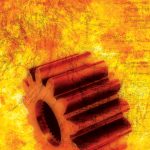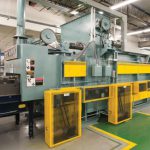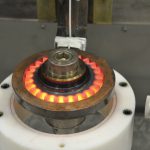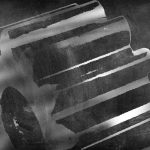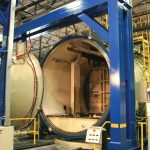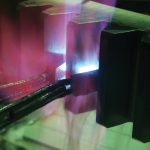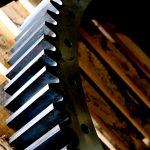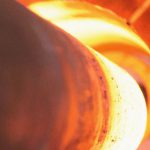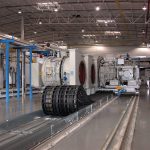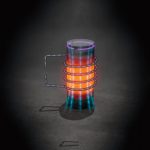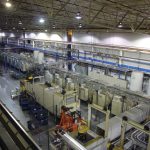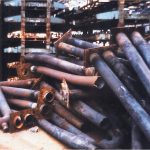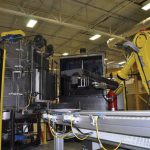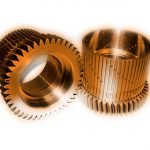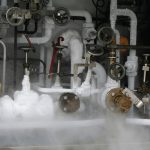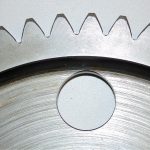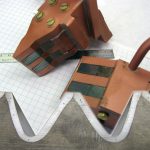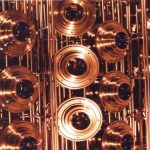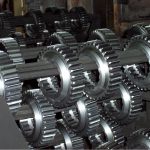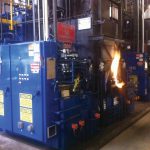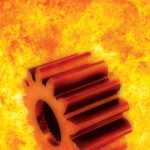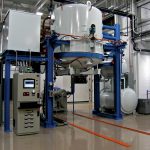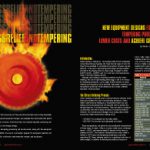Optimizing Case-Depth Uniformity in the Vacuum Carburizing Process
Over the past few decades, the vacuum carburizing process has been proven to produce superior part quality. In addition, the use of vacuum technology...
Controlling Distortion in Heat Treatment Through Press Quenching
Introduction
Press quenching is a specialized quenching technique that may be utilized to minimize the distortion of complex geometrical components during heat treatment1. Distortion is...
Producing Quality Parts in an Atmosphere Furnace: How to Optimize Your Quenching and...
Throughout the manufacturing process, heat treatment is consistently viewed as a critical step for adding value to the parts produced. A part expensively manufactured...
A Time-Compressed Numerical Approach for Thermal Analysis of Preheating Process in Powder Metallurgy
Introduction
Recent developments have been made in the field of powder metallurgy of materials to obtain advanced properties as compared to conventional manufacturing of materials...
Stress Generation in an Axle Shaft during Induction Hardening
Introduction
Induction hardening of steel components offers a fast heating rate, high efficiency, and the ability to heat locally. Induction hardening is a highly nonlinear...
Enhanced Properties of 17-7 PH Stainless Steel
Background
Precipitation-hardening (PH) stainless steel grade 17-7 PH is classified as a semiaustenitic stainless steel used extensively in aerospace and finding new applications in the...
Investigations on Tooth Root Bending Strength of Case Hardened Gears in the Range of...
Gears are one of the critical components that determine the capability and reliability of drive systems. Thus the tooth root load-carrying capacity is one...
Reducing Gear Size for Compact Transmission Design by Selecting Steel Grade and Heat Treatment...
Gears are the most important components for transmissions. In many situations, the size of a transmission design needs to be reduced without decreasing power...
Mathematical Modelling of the Vacuum Carburizing Process
CAs expectations regarding the quality and precision of products continue to grow, further advances in materials engineering are strictly associated with the use of...
Case Study: SECO/Warwick and ABB Instrument Transformers
Instrument transformers are a precision device designed to accurately meter either current or voltage on an electrical circuit. They also provide a means to...
Some Basic Mathematical Elements On Steel Heat Treating: Modeling, Freeware Packages And Numerical Simulation
Every year since 2007, in June, a Modeling Week is held within the master program of the faculty of Mathematics of Universidad Complutense of...
Case Study: Phoenix Contact and Ipsen
Ipsen supports its equipment across the globe using the mGuard VPN router from Phoenix Contact, which allows secure remote access via the Internet.
Ipsen designs...
Heat Treat 101: A Primer
Gears play an essential role in the performance of many products that we rely on in our everyday lives. When we think about gears,...
Vacuum Carburizing Large Gears
Throughout the machining process, great care is taken to achieve and maintain critical dimensions. The gears are then handed over for heat treatment. Exposing...
Tooth-by-Tooth Induction Hardening of Gears (and How To Avoid Some Common Problems)
Tooth-by-tooth induction hardening of gears is a complex process. Variations of any of kind may be sufficient to cause the process to run out...
Flame Hardening Gears
Long gone are the days when a machine operator sat in a dark corner of the shop staring at the cherry red glow of...
Heat Treatment of Large Components
Large gear components can be offered in many applications such as marine, wind power, steel rolling mills, power plants, transportation, railroad, aircraft, cement crushers,...
Advantages of Induction Hardening with No Soft Zone on Large Bearings
Large bearings are required to carry large axial and radial forces and their resulting torques. Typical applications include general machinery and construction equipment, as...
Increased Productivity Combining C/C Fixturing and LPC
Carbon/carbon and graphite materials are used in a variety of applications throughout the high temperature furnace industry. Entire vacuum hot zones are manufactured from...
Inductive Spin Hardening of Gears: A Survey of Key Features and Benefits
A large part of the misunderstanding of induction hardening seems to stem from an incomplete grasp of the basic induction heating process. This is...
Properties of Cases Treated with High-Temperature Vacuum Carburization
Carburizing continues to be one of the basic thermochemical treatments used for industrial steel. With the development of the industry, carburizing has evolved from...
CASE STUDY: Company: Praxair Distribution, Inc. Customer: ALD Thermal Treatment, Inc.
In the past several years, heat treating companies have experienced a significant supply disruption in generated acetylene. Additionally, generated acetylene may not offer the...
Cures for Heat Treaters Headaches
Heat treaters all over the world encounter similar problems with atmosphere furnaces. These problems not only cause operational headaches in the daily lives of...
Improving Production Safely with Integrated Heat Treat and Quenching Cell
These aspects are not just requested, but increasingly required by industrial clients looking to install new thermal systems or expand or enhance existing processes...
Simulation of Gas Quenching of Steel Parts
One major difference between immersion quenching and gas quenching is the presence of boiling during the early stages of quenching in oil or water....
Tighter Control Through Understanding What Your TUS Reports Are Telling You
Temperature uniformity is the temperature variation (usually expressed as ± degrees) within the qualified furnace work zone (Figure 1) with respect to a set...
Gas vs. Liquid Quenching: A Direct Comparison in Hardenability to Reduce Distortion
Introduction
Hardenability is the ability of steel to partially or completely transform from austenite to some fraction of martensite at a given depth below the...
Deep Cryogenic Treatment
What is deep cryogenic treatment? Deep cryogenic treatment (DCT) of steels and other materials is a distinct process that uses the application of extreme...
How Gears Fail
Heat treatment plays an important — some would say critical — role in gear manufacturing. Therefore, there is a need to better understand, from...
Recent Inventions and Innovations in Induction Hardening of Gears and Gear-like Components
This paper focuses on recent inventions and innovations (from the past four-six years) in induction hardening of gears and gear-like components, including, but not...
Heat Treat Process For Gears
Heat treatment is a critical and complex element in the manufacturing of gears that greatly impacts how each will perform in transmitting power or...
Typical Heat Treatment Defects of Gears and Solutions Using FEA Modeling
Steel gears are heat treated to obtain enhanced properties and improved service performance. Quench hardening is one of the most important heat treatment processes...
Austempering: An Old Process with New Potential for Gears
The Austemper heat treat process was first developed in the 1930’s. Its application was initially limited to low volume, relatively small steel components. This has...
Variety of Furnaces Can Be Used for Heat Treatment of Gears
Gear heat treatment can be done in a wide variety of different types of industrial furnaces, each with its own unique characteristics. This article...
How to Avoid Heat Treatment Problems When Launching New Gear Programs
So you’ve just secured an exciting new gear-manufacturing project and it’s time to start production planning. Heat treatment, such as carburizing, hardening and tempering,...
A Case for Acetylene Based Low Pressure Carburizing of Gears
Low pressure carburizing (LPC) is the technology of choice for the precise carburizing of high-performance gearing . To achieve absolute process repeatability and the...
New Simulation Software Tool Successfully Used in Carburizing Gears
In 1999 when the Center for Heat Treat Excellence (CHTE) was formed, the idea was to develop collaborative research between the industrial sector and...
Contour Hardening Bevel, Hypoid, and Pinion Gears
Traditional gear heat treatment involves gas carburizing in batch or continuous furnaces for an extended time, and then oil quenching. The gears are typically...
Maintenance Procedures for Vacuum Furnaces
More gear manufacturers need to add vacuum furnace machines to the shop floor and include this procedure in the overall manufacturing process. As vacuum...
Rapid Stress Relief and Tempering
Stress relief and tempering are important processes, but they are still conducted much as they have been for the past 50 years. However, advanced...










